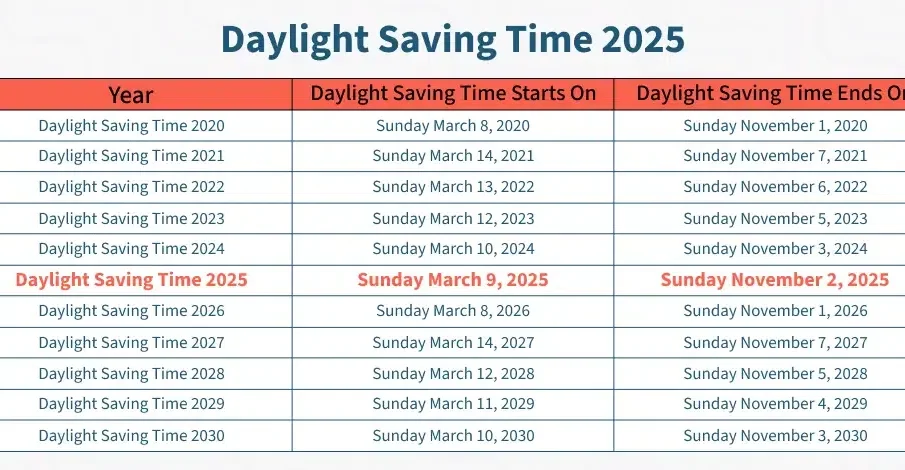Understanding Daylight Savings 2025: Key Information

Introduction
Daylight savings time (DST) is a biannual practice that involves moving the clock forward in the spring and back in the fall. The adjustment aims to make better use of daylight during the longer days of summer. As we look forward to 2025, understanding when and how daylight savings occurs is important for Canadians, as it impacts various aspects of daily life, including work schedules, transportation, and health.
Key Dates in 2025
In 2025, daylight savings time in Canada is scheduled to begin on March 9, when clocks will move forward an hour at 2 AM. This change will allow for more daylight in the evenings, encouraging outdoor activities and reducing reliance on artificial lighting. Clocks will revert back one hour for standard time on November 2, 2025, at 2 AM. These shifts are part of the routine biannual adjustments recognized across most provinces and territories, except for areas like Saskatchewan and parts of Quebec, which do not observe daylight saving time.
Impact on Canadians
The shifts associated with daylight savings can affect sleep patterns, productivity, and even mental health. Studies have shown that the transition can lead to short-term sleep disruptions and increased risks of heart attacks and workplace accidents. Therefore, it is beneficial for Canadians to prepare for these changes by adjusting their sleep schedules and routines in advance.
Legislation and Future Considerations
Daylight savings time remains a topic of discussion among policymakers. Some regions in Canada are re-evaluating their approach to DST, with discussions around whether to abolish the practice altogether or maintain it year-round. In recent years, communities like British Columbia and Ontario have suggested permanent daylight saving time, which would eliminate the need for biannual clock changes. Public opinion on this switch is divided, with some supporting the adjustment for more evening light and others concerned about potential disruptions to the natural sleep-wake cycle.
Conclusion
As we approach 2025, it’s essential for Canadians to stay informed about daylight savings and its implications. Whether it leads to policy changes or remains a standard practice, individuals should be prepared for the time changes, as they will continue to be a significant part of Canadian life. Keeping abreast of the potential shifts in legislative attitudes towards daylight saving time can help citizens adapt their routines effectively and participate in community discussions regarding this ongoing issue.









